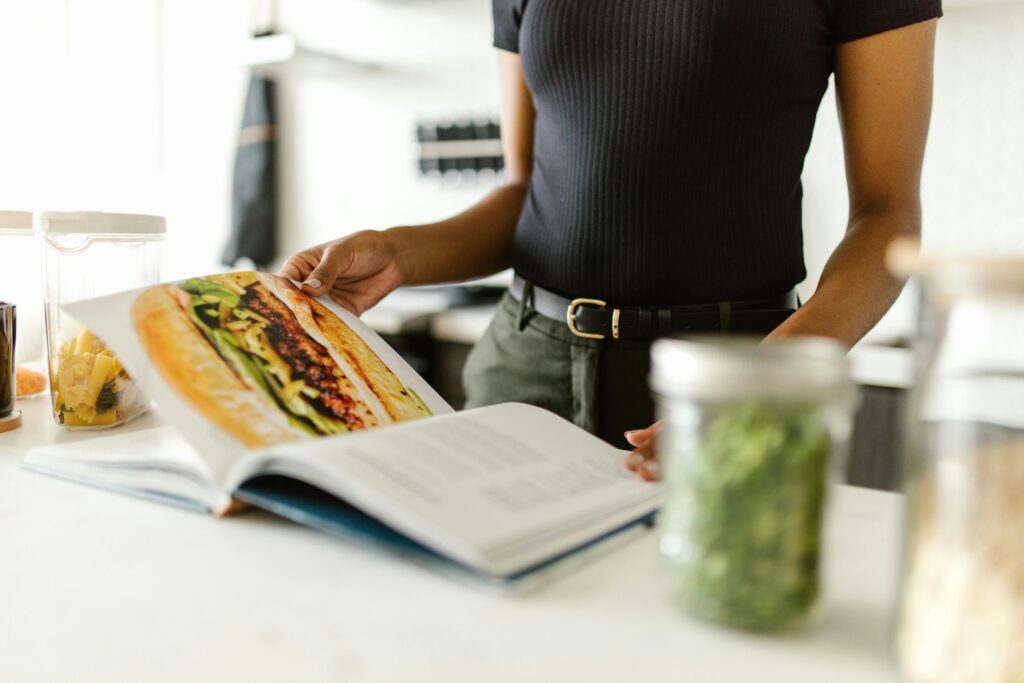One of the most shocking pieces of meal preparation for us was learning portion sizes. If you are using a calorie budget to adjust your weight, you need to know your calories. To know your calories, you need to know your portion sizes. In this post, we will talk about how meal prep helps understand quantities. This understanding will give you some idea of how to estimate food you don’t cook yourself.
Portion or Serving Size, which is the correct way to discuss what you eat? We use portion size because there is an established convention of serving and serving size. Portions are a way to capture what we eat, not the serving size. We discuss why serving size is based on a different calorie per day intake than is currently used here.
Why is it so Small?
I have a frozen lasagna I like. I also love a certain brand of pot pie. Both of these items were in the frozen food aisle at our local grocery store. As we became more conscious of our goals with our calories, we started reading labels. As we alluded to in an earlier post, they weren’t what they seemed to be. Becoming more curious we started some experiments.
We bought and cooked one of the lasagnas. We then proceeded to portion it out based on what the company called a serving size. It was tiny when compared to what we were used to eating. It was also tiny compared to what I was used to at my favorite restaurants. We had the same issue with the pot pie.
You Can’t Eat That Junk Then Right…Maybe?
That means we stopped eating it, correct? Not the lasagna. The lasagna serving size was simple to adjust the portion size by cutting it differently. It did make the pot pie a non-starter as it wasn’t sharable. This led us to another understanding. The nutrition label changes based on how much you eat. If you aren’t eating the recommended serving size, you aren’t getting what is on that label.
In the case of the lasagna, we simply did some math and adjusted to our meal size. Their serving size was about 330 calories. We wanted 500 per meal. That was 1.5 times their serving size. That meant everything on the label went up by 50%. If there were 20g of protein per serving, our 500-calorie portion had 30g. If it had 1000 grams of sodium, that went up to 1,500 grams for our portion size.
Recipes Have Serving Sizes Too

We also started looking at the recipes we were cooking. Most recipes online have the number of servings they make, the calories in them, and a rough nutrition breakdown. We got downright geeky about it and started to weigh our portions for a while. Think that is a little too far? It was one of the most important exercises we ever did to get an idea of what we were eating.
If you are staying on a calorie budget, spend 2 or 3 weeks weighing portions. Knowing what 4 oz of chicken or beef looks like is important. Love eating mashed potatoes? Weigh out a portion of them to see what it looks like. Gravy is calorie dense so it is best to know what ½ cup of gravy looks like.
No matter if you are losing, gaining, or trying to maintain your weight it is very difficult without knowing portion size. Because we aren’t selling a new diet or a miracle pill we won’t say it is easy. It is a pain in the backside to do this. Once you do it you will never look at food shows, restaurants, and even what you make the same.
Go Forth and Feed!
Once you understand portion sizes, the calories, and the nutrition in them, you are empowered to control your eating. You can now make more informed choices. Want a protein boost, you know what that looks like on your plate. Carb loading for an event, you know how much pasta that is. At a company party, you have an idea of the difference between the tuna sandwich and the roast beef sandwich.
In this post, we covered how to start understanding portion sizes. We have also covered why understanding them is so important to weight management. Lastly, we have covered how nutrition is based on portion size and why changing that size changes the nutritional value of that meal. You should now feel empowered to make decisions based on your needs.
